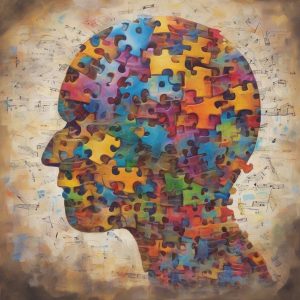2.1 Identifying the Pieces of the Thinking Puzzle

Critical thinking is the first step to effective reasoning and learning. To become truly reflective thinkers, students must develop the ability to assess their own thought processes, identifying the components that shape their reasoning.
This chapter explores a structured approach to self-assessment by breaking down reasoning into key elements—each representing a crucial “piece” of the thinking puzzle. By recognizing these components, students can refine their ability to think logically, evaluate arguments, and make sound judgments.
The Pieces of the Thinking Puzzle
Every thought process is directed toward an objective. Whether solving a problem, making a decision, or exploring an idea, reasoning exists to achieve a goal. Teaching students to consciously identify their purpose helps clarify their direction and strengthens the quality of their reasoning. Educators can encourage students to ask: What am I trying to accomplish? This simple yet powerful question brings greater focus to their thought process.
Reasoning does not happen by chance or come from a sudden moment of inspiration. It happens from the need to address a specific problem or question. When a person explicitly defines the issue they are tackling, then reasoning can be approached more systematically. The thinker should always consider: What problem or question am I addressing? Understanding this initial aspect in its full measure ensures the person is engaging in purposeful thinking rather than wandering aimlessly around a topic.
Every thought process is built upon certain assumptions—some are explicit, others are subconscious. Recognizing the underlying assumptions of a specific direction of thought allows thinkers to challenge biases and gaps in their reasoning. Encouraging students to scrutinize their assumptions with questions like “What am I taking for granted?” fosters deeper intellectual awareness.
Our individual perceptions are what shape our interpretations. Every person approaches reasoning from a particular viewpoint, which influences how they analyze the information they obtain. For this reason, students must be mindful of their perspectives and be open to alternative viewpoints. Asking “How does my perspective shape my reasoning?” promotes intellectual humility and broadens critical analysis.
The strength of reasoning centers on the quality and reliability of the information supporting it. Encouraging thinkers to assess their sources and differentiate between credible evidence and weak or misleading data helps them develop well-informed reasoning. As an academic thinker, you should consistently ask yourself: “What evidence supports my reasoning?”
Concepts frame how we interpret information. Without clear definitions, reasoning can become vague or misleading. Teaching writers to define key concepts within their thought process ensures precision and clarity. A guiding question, such as “Which concepts shape my thinking?” helps maintain theoretical consistency.
Inference is the process of interpreting data to draw conclusions. Strong reasoning requires logical and justifiable inferences rather than unsupported assumptions. Thinkers benefit from asking: “Are my conclusions logically drawn from the evidence I have?” This self-check ensures that our reasoning remains valid.
Every decision we make or conclusion we express carries implications. Some are foreseeable, but others are unintended. By reflecting on the potential impact of our reasoning, we become more responsible thinkers. Encouraging questions like “What are the consequences of this conclusion?” promotes ethical and long-term thinking.
The above elements of thought inevitably lead us to adopt strategies that can teach us self-assessment. In other words, strategies to help us cultivate reflective thinking.

